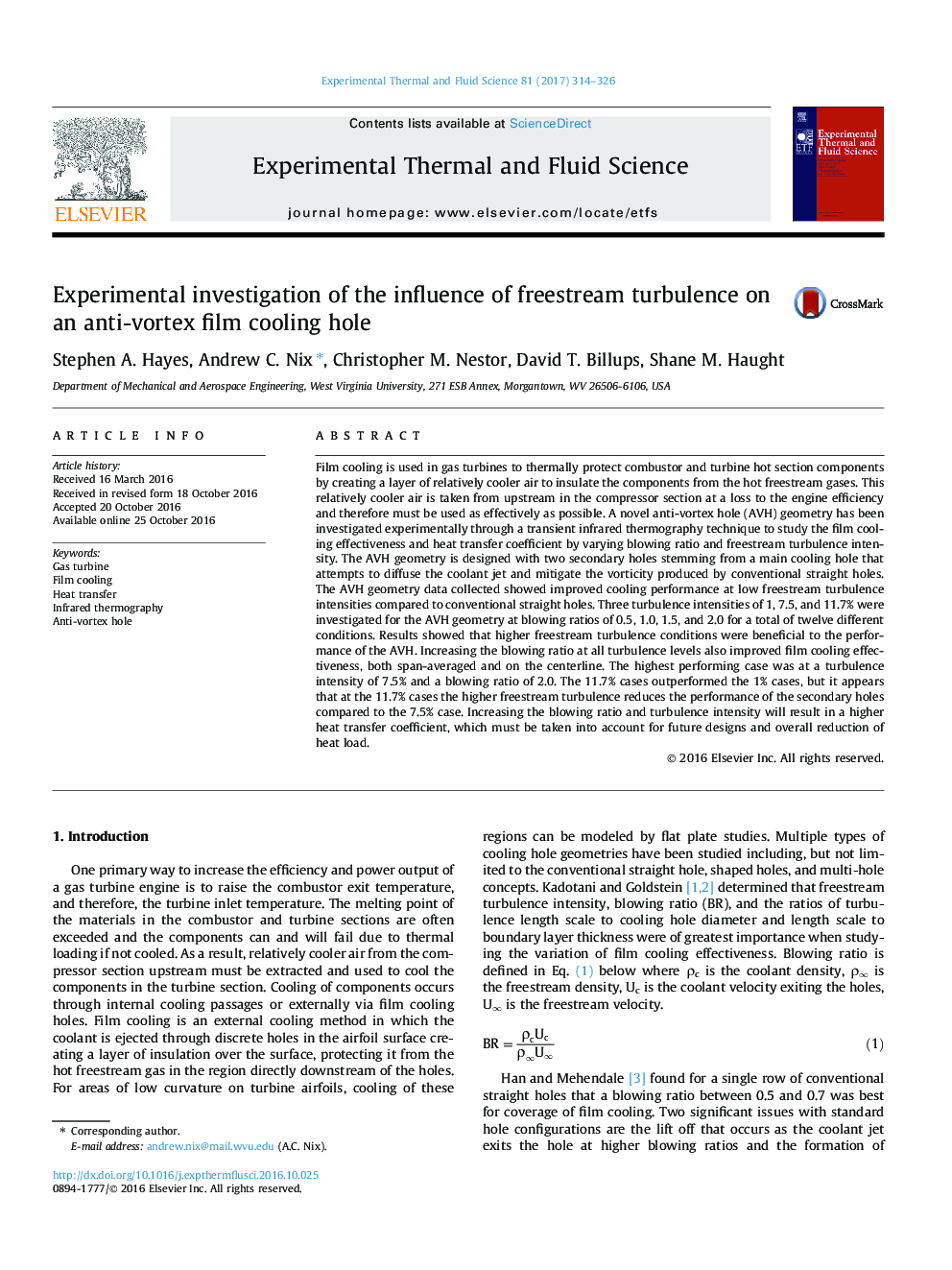| کد مقاله | کد نشریه | سال انتشار | مقاله انگلیسی | نسخه تمام متن |
|---|---|---|---|---|
| 4992536 | 1457395 | 2017 | 13 صفحه PDF | دانلود رایگان |
عنوان انگلیسی مقاله ISI
Experimental investigation of the influence of freestream turbulence on an anti-vortex film cooling hole
ترجمه فارسی عنوان
بررسی تجربی اثر نفوذ توربولار آزاد در یک سوراخ خنک کننده فیلم ضد گرد و غبار
دانلود مقاله + سفارش ترجمه
دانلود مقاله ISI انگلیسی
رایگان برای ایرانیان
کلمات کلیدی
توربین گازی، خنک کننده فیلم، انتقال گرما، ترموگرافی مادون قرمز، سوراخ ضد گرد و غبار،
موضوعات مرتبط
مهندسی و علوم پایه
مهندسی شیمی
جریان سیال و فرایندهای انتقال
چکیده انگلیسی
Film cooling is used in gas turbines to thermally protect combustor and turbine hot section components by creating a layer of relatively cooler air to insulate the components from the hot freestream gases. This relatively cooler air is taken from upstream in the compressor section at a loss to the engine efficiency and therefore must be used as effectively as possible. A novel anti-vortex hole (AVH) geometry has been investigated experimentally through a transient infrared thermography technique to study the film cooling effectiveness and heat transfer coefficient by varying blowing ratio and freestream turbulence intensity. The AVH geometry is designed with two secondary holes stemming from a main cooling hole that attempts to diffuse the coolant jet and mitigate the vorticity produced by conventional straight holes. The AVH geometry data collected showed improved cooling performance at low freestream turbulence intensities compared to conventional straight holes. Three turbulence intensities of 1, 7.5, and 11.7% were investigated for the AVH geometry at blowing ratios of 0.5, 1.0, 1.5, and 2.0 for a total of twelve different conditions. Results showed that higher freestream turbulence conditions were beneficial to the performance of the AVH. Increasing the blowing ratio at all turbulence levels also improved film cooling effectiveness, both span-averaged and on the centerline. The highest performing case was at a turbulence intensity of 7.5% and a blowing ratio of 2.0. The 11.7% cases outperformed the 1% cases, but it appears that at the 11.7% cases the higher freestream turbulence reduces the performance of the secondary holes compared to the 7.5% case. Increasing the blowing ratio and turbulence intensity will result in a higher heat transfer coefficient, which must be taken into account for future designs and overall reduction of heat load.
ناشر
Database: Elsevier - ScienceDirect (ساینس دایرکت)
Journal: Experimental Thermal and Fluid Science - Volume 81, February 2017, Pages 314-326
Journal: Experimental Thermal and Fluid Science - Volume 81, February 2017, Pages 314-326
نویسندگان
Stephen A. Hayes, Andrew C. Nix, Christopher M. Nestor, David T. Billups, Shane M. Haught,
